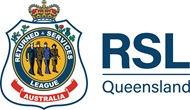
Honouring unsung heroes of the Royal Australian Navy
17 December 2021- ANZACspirit
- History & commemoration
- Veteran stories
The Queensland Section of the Naval Association of Australia commemorates a Royal Australian Navy ship, significant event, or crew member each month.
By Jayne Keogh
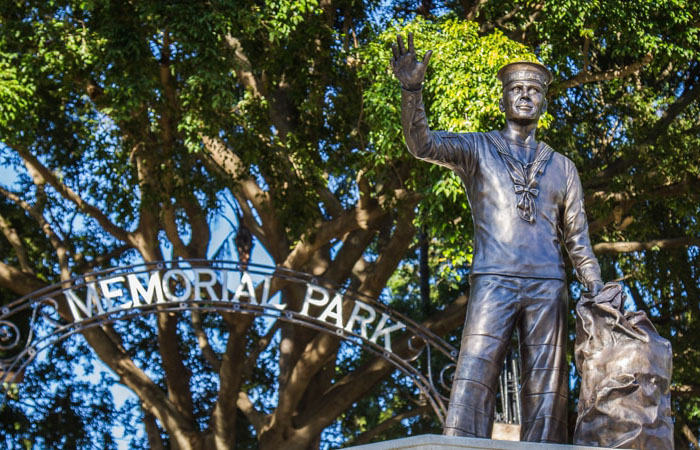
Image of Jack Tar statue courtesy of ABC Radio Brisbane: Jessica Hinchliffe. Other images courtesy of the Queensland Section of the Naval Association of Australia and the Australian War Memorial.
Usually held on the last Thursday of the month at the Jack Tar statue in South Brisbane Memorial Park, the ceremonies were inspired by the Australian War Memorial’s Last Post Ceremonies. They are attended by descendants of those being honoured, former and current serving RAN members, friends, and the general public.
Ray Sandford, State Section President of the NAA, said that the ceremonies played an important role in remembering the service of sailors of all ranks, unsung heroes, and lesser-known vessels in history.
“The unexpected result of the ceremonies is the way we have reached out to the descendants of these veterans,” he said.
“Our numbers have grown rapidly since we started, supported by unit groups and the families of those we are commemorating.’’
‘’We now do our best to trace the descendants, who all have very special personal family stories to share. This emotional touch is really appreciated by the families who participate.”
State Public Relations Manager of the NAA, Jane Keogh, believes the Jack Tar ceremonies will help preserve the Navy’s legacy.
“If you have a ceremony in King George Square or a parade, it really does make an impression on people, rather than just writing a book about it or something like that,” she said.
“These events tend to be forgotten once the war or the conflict is over. They just disappear. Actually doing something to remember them makes a real difference.”
The following sailors, battles and vessels have been honoured at the Jack Tar ceremonies.
Sub Lieutenant Kenneth Briggs and XE4
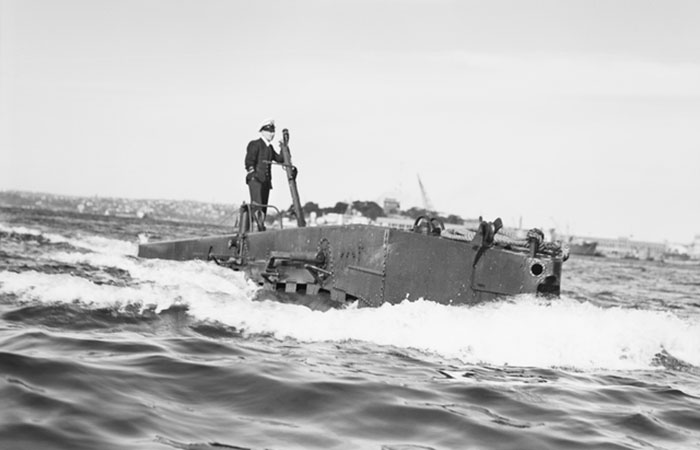
Submarine XE4.
In early 2020, in conjunction with the Submariners Association of Australia, the NAA commemorated Sub Lieutenant Kenneth Briggs RANVR DSC and the men of XE4.
As a crew member of the midget submarine, Ken swam for 10 minutes with only a hose for oxygen to locate and cut Japanese communication cables between Saigon and Singapore on 31 July 1945. He faced enormous water pressure, time limits and primitive equipment. Just to prove a point, he returned to the submarine with a short length of the cable. To this day, he keeps it “in a safe place.”
The cable had restricted the Allies’ ability to overhear and intercept radio messages, and its destruction played an important role in the final defeat of Japan. Ken’s granddaughter, Queensland Police Deputy Inspector Melissa Andersen, attended the ceremony and gave the address, adding a very personal note to the day.
Remembering HMAS Voyager
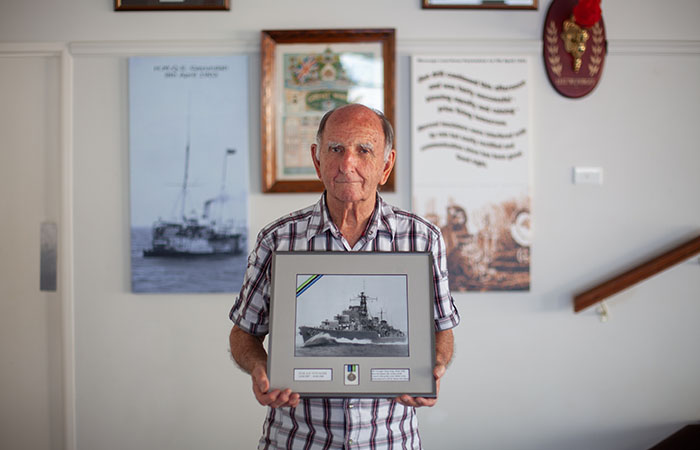
HMAS Voyager survivor Alan Hellier.
On February 25, 2021, a Jack Tar ceremony was held to honour the survivors of HMAS Voyager, as well as those who went down with the ship. The NAA issued an invitation to survivors and descendants of the tragedy, current and former RAN personnel, and friends and families to attend the ceremony.
The new CO of HMAS Moreton, Commander Phillipa Hay CSC RAN, also attended the commemoration. A special song written and recorded by Gold Coast singer Miriam Cope, ‘The Voyager’s Gallant Men’, was played.
Four survivors, Alan Hellier, Vic McDade, Alex Hagerty and Bluey Ducker attended with their families and were visibly very moved by the ceremony. Miriam travelled from the Gold Coast to attend and meet the survivors.
1st Royal Australian Naval Bridging Train
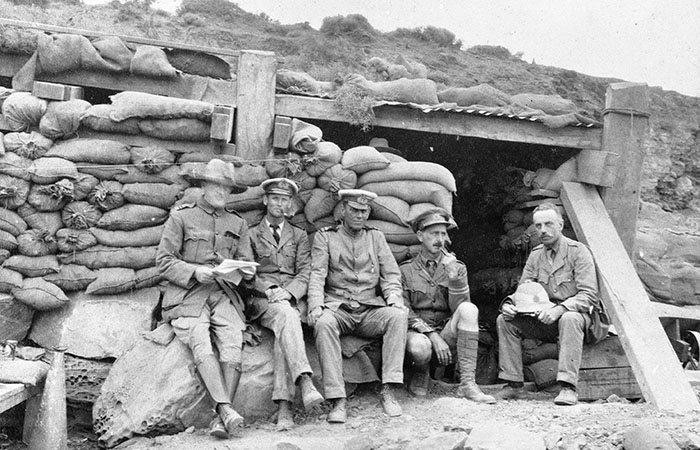
Members of the 1st Royal Australian Naval Bridging Train
In March 2020, the NAA commemorated Lieutenant Thomas Arthur Bond, DSO MID R.A.N.R of the 1st Royal Australian Naval Bridging Train (RANBT). The RANBT (1915-1917) transported food, water, ammunition, and supplies around the Gallipoli Peninsula during World War I.
Most of the unit had no prior experience or training. They were a rag tag bunch, very much outside Naval traditions, and from all walks of life, including accountants, boilermakers, book binders and pearl divers. Using resourcefulness, ingenuity and a ‘can do’ attitude, the RANBT played a crucial role in the success of the Gallipoli withdrawal as they built the timber pier and stayed until every soldier was safely aboard the final departing ship. They were the last Australians to leave Gallipoli.
The RANBT were all reservists, and their 1st Lieutenant was a 50-year-old accountant from Brisbane, Thomas Arthur Bond. Despite his background, Bond won the DSO for single handily capturing eight German officers and 20 armed New Guinea police in the Battle of Bitapaka.
One descendant, Ann Holland, travelled from Melbourne to honour her grandfather Alec Frank Holland from the RANBT. Ann also presented the NAA with a copy of Alec’s diary, which chronicled in detail every day of his time in the Navy during World War I.
HMAS AE2
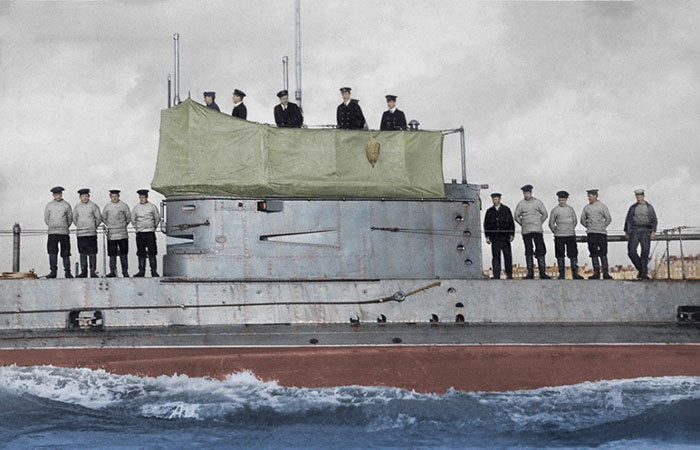
HMAS AE2
In April, the NAA honoured another Australian submarine, HMAS AE2. The Gallipoli campaign is widely remembered in Australia, but an important addition to the land campaign was the lesser-known part played by the AE2. One of Australia’s first submarines, it forged a passage through the Dardanelles on 25 April 1915, at the very time troops were landing at ANZAC Cove.
Writer Rudyard Kipling described this crossing as “6 hours of blind death” as it meant suffering the sound of mine cables scraping along the side of the submarine as it slid under the minefields, and the fear of depth charges. Adding to this, the vessel had problems with its torpedoes and had to deal with deadly currents, Turkish artillery, prowling gunboats and the risk of running aground in shallow waters.
The Captain of the AE2, Henry Hugh Gordon Dacre Stoker, and its only Queensland crew member Alexander Charles Nichols, were honoured at the Jack Tar ceremony. Six of Alec’s descendants attended, along with the granddaughter of PO Stephen Gilbert who sadly died in a Turkish prison camp.
AE2 was tasked with running amok in the Sea of Marmora, causing a distraction for the Turks during the ANZAC landings and to scupper their plans of bringing in fresh troops and resupplies by sea. Apart from this tactical objective, the AE2’s success in breaching the heavily fortified Dardanelles served as a rally for the ANZAC landing at Gallipoli.
Official war historian C.E.W. Bean observed a notice on a stump at ANZAC Cove that read “Australian Sub AE2 just through the Dardanelles. Advance Australia!”
Lieutenant Leonard Darby and HMAS Sydney
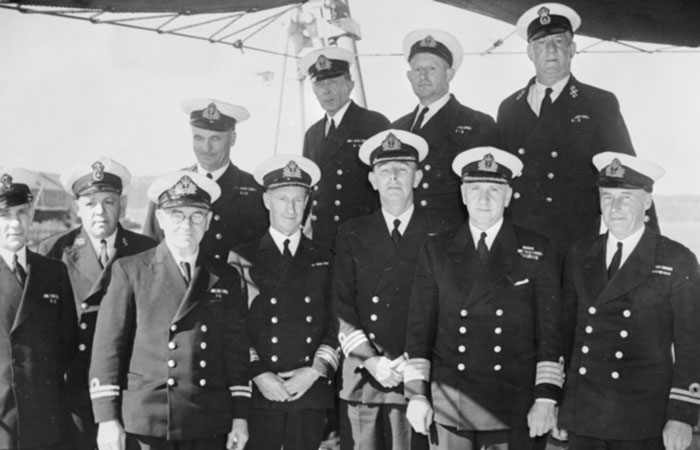
HMAS Sydney survivors, including Senior Surgeon Lieutenant Leonard Darby (second from right, front row)
In September’s ceremony, Senior Surgeon Lieutenant Leonard Darby was honoured for his selfless work on HMAS Sydney during the battle with Emden in 1914. At age 25 and just one year out of medical school, Leonard and two medical orderlies worked for 40 hours straight during the Battle of the Cocos Island in terrible tropical conditions to save the lives of the injured. Not only did he tend the wounded from Sydney, but also the injured from Emden.
Operating in bathrooms and corridors, his medical team worked on the horrific wounds sustained from shells and fires on both ships. Surgeon Darby quickly rose in the ranks, finishing his career as Principal Medical Officer of Naval Ships and Establishments, but received no medals for his part in the Cocos Islands Battle.
HMAS Yarra
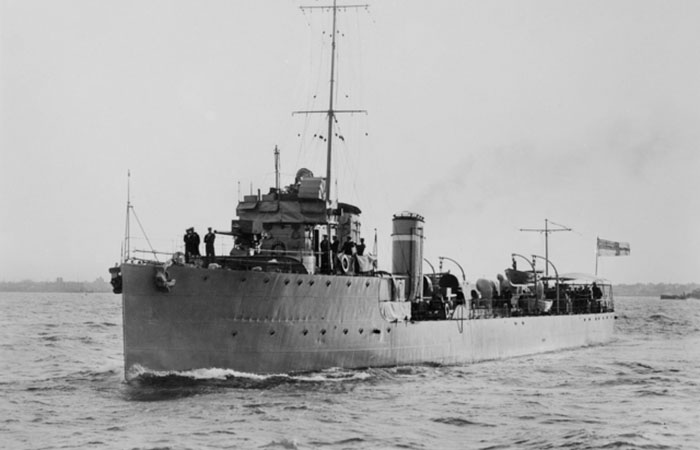
HMAS Yarra
In November, the ceremony focused on those lost on HMAS Yarra during World War II in the Timor Sea. The Yarra was escorting three ships back to Fremantle on 4 March 1942, fleeing the Japanese attack on Singapore, when Commanding Officer Lieutenant Commander Robert Rankin sighted the Japanese heavy cruisers Atago, Takao and Maya.
He ordered his charges to scatter and deliberately turned into the Japanese convoy, placing Yarra in the path of the enemy, in the hope the other ships could escape. He attacked the Japanese ships vigorously, but against superior fire power, range and speed, the task was hopeless. However, the Yarra fought and kept on fighting even as one by one, the four Australian convoy ships were smashed and sunk in welters of flame and smoke. Rankin ordered 'Abandon Ship', and minutes later he was killed when an 8-inch salvo hit the bridge.
Able Seaman Buck Taylor initially assisted some sailors to escape, then ignored the Captain's orders to abandon ship and returned to his gunnery post where he remained alone at his gun, firing slowly and defiantly at the enemy. Finally, like Teddy Sheean, Taylor went down with his ship. A presentation was made to Marie Farr, the granddaughter of Able Seaman Billy Witherall, who survived after 13 days in the water.
2022 Ceremonies
The following people, vessels and events will be commemorated in 2022.
- 24 February - HMAS Voyager (II)
- 1 March - HMAS Perth 1
- 31 March - RAN Stokers
- 28 April - Australia Navy Military Expedition Force (PNG WW1)
- 26 May - Malayan Emergency and Indonesian Confrontation
- 30 June - Vietnam Conflict
- 28 July - RAN Divers
- 25 August - Merchant Navy
- 29 September - Navy Women
- 27 October - TBC
- 24 November - HMAS Sydney (II)
Ray Sandford said that anyone with a connection to these ships should reach out to the NAA.
“We would love to hear from anyone who is connected to these ships or people,” said Ray “Please contact us on 0447 734 744.”
Want to stay informed? Subscribe today and get the latest news, services, events and more direct to your email inbox.
Related News
Loading

